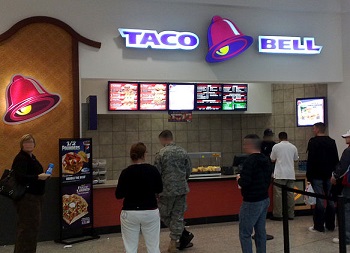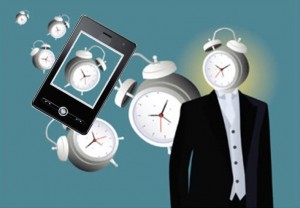The goal is to ensure that people will be swayed and will want to buy from the breakfast menu.
Taco Bell knows that the millennial generation is its primary target market, and the fast food company is now tracking its cell phone toting customers in order to be able to best design their mobile ads strategy.
The idea is to reach these mobile device users the moment they get up in the morning to make them crave breakfast.
Not just any breakfast, of course. The mobile ads are a part of a campaign to help to promote the new breakfast menu. Earlier this month, Taco Bell rolled out 10 new breakfast items with the highly affordable price tag of only $1 each. This is the latest step in encouraging people to think of their quick service restaurants for their first meal of the day – an effort that began back in 2014.
To make sure these mobile ads go out at the perfect moment, Taco Bell tracks customer phone activity and data.
 According to the Taco Bell vice president of media and brand partnerships, Juliete Corsinita, “We’ve honed our media skills over the last couple of years.” As a part of this effort, the company is also working with Aki, a mobile advertising firm that attempts to “target mobile moments”.
According to the Taco Bell vice president of media and brand partnerships, Juliete Corsinita, “We’ve honed our media skills over the last couple of years.” As a part of this effort, the company is also working with Aki, a mobile advertising firm that attempts to “target mobile moments”.
The way Aki works is that it starts by tracking the phone activity and data of a mobile device user. This allows it to target its smartphone ads based on exceptionally specific habits and behaviors such as knowing which apps are used by a smartphone user first thing in the morning. It can learn the times of day when someone looks at a breakfast recipe as well as the favorite news apps for catching up on what’s going on in the world before the day begins.
Taco Bell has also been tinkering with the Wishbone mobile app that makes it possible for users to ask their followers to complete mini-polls that have participants choosing their favorite images. When the app is opened, they’re asked which between two pictures is the best. Starting earlier this month, one of these efforts in mobile ads in disguise has asked people to choose between a piece of flat bread or the new flatbread quesadilla sold at the restaurants.
These technologies can help to shorten lines, which could be promising for many industries.
Typically speaking, people hate waiting in line, and the fact that new data is indicating that mobile payments could help to cut wait times in a meaningful way is starting to boost its appeal to retailers, quick service restaurants, events, and other industries.
Any brand that has a business model based on rapid service will find faster transactions attractive.
In Chicago at the recent Interactive Customer Experience Summit from Networld Media Group, a number of important brands – including MoneyGram International, Dunkin’ Donuts and Taco Bell – came together to discuss the issue of wait times and the ways in which they could improve the customer experience. In their discussions, one of the most common denominators was that mobile payments and m-commerce helped to reduce the amount of time that a customer was required to wait in order to complete their full interaction with the brand for that session.
Taco Bell found that their mobile payments app helped to improve the customer experience in a range of ways.
 At that fast food company, approximately 75 percent of all of the orders that are taken within their locations are customized. This, according to the Taco Bell Corp associate manager for operations, Veronica Luna. However, when the mobile app was introduced by the brand, what the company discovered was that customers had a tendency to add to their items instead of taking things away. Moreover, the average check amounts are higher among orders made by way of the app.
At that fast food company, approximately 75 percent of all of the orders that are taken within their locations are customized. This, according to the Taco Bell Corp associate manager for operations, Veronica Luna. However, when the mobile app was introduced by the brand, what the company discovered was that customers had a tendency to add to their items instead of taking things away. Moreover, the average check amounts are higher among orders made by way of the app.
Furthermore, the company made it possible for customers to speed up their own experiences within the store. The customers who used the mobile app to place their orders were able to use that same app to check in as soon as they arrived at the location. This signaled to employees that the individual had arrived, so that they could begin filling that order and serve them as soon as possible. This reduced the amount of waiting for food prep and meant that the customer never needed to wait in line to actually place the order.
Moreover, with mobile payments, it meant that the customer simply needed to receive the order and leave, instead of needing to wait at a till to complete the transaction. This type of opportunity is starting to be seen to an increasing degree by different companies that are able to reduce the amount of time that customers have to wait while in the physical store locations.
 According to the Taco Bell vice president of media and brand partnerships, Juliete Corsinita, “We’ve honed our media skills over the last couple of years.” As a part of this effort, the company is also working with Aki, a mobile advertising firm that attempts to “target mobile moments”.
According to the Taco Bell vice president of media and brand partnerships, Juliete Corsinita, “We’ve honed our media skills over the last couple of years.” As a part of this effort, the company is also working with Aki, a mobile advertising firm that attempts to “target mobile moments”.
 At that fast food company, approximately 75 percent of all of the orders that are taken within their locations are customized. This, according to the Taco Bell Corp associate manager for operations, Veronica Luna. However, when the
At that fast food company, approximately 75 percent of all of the orders that are taken within their locations are customized. This, according to the Taco Bell Corp associate manager for operations, Veronica Luna. However, when the 